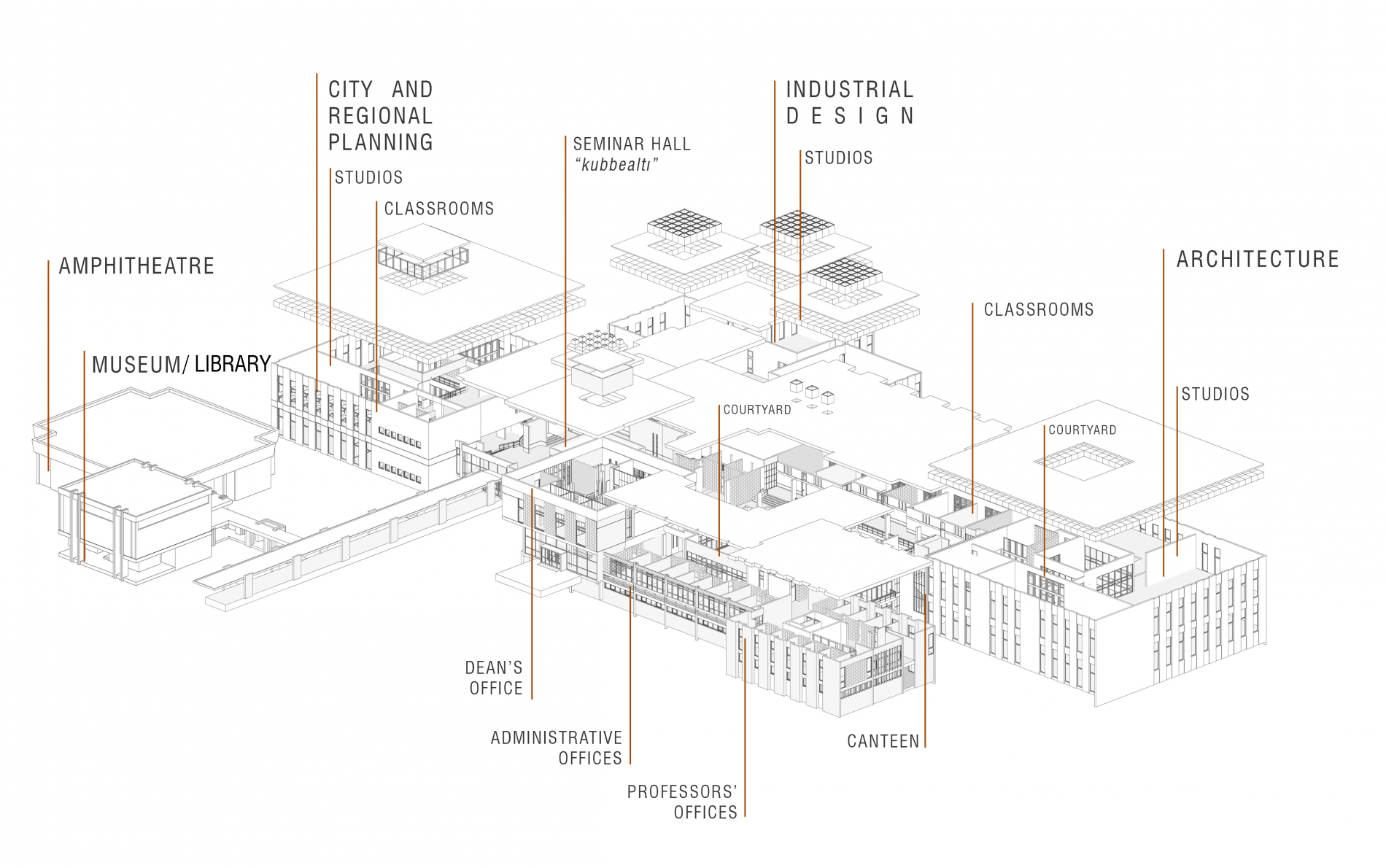General Information
- English
- Türkçe
 |
 |
_
Name of building: METU Department of Architecture.
Architect(s): Altuğ Çinici (1935-) and Behruz Çinici (1932-2011)
Design Dates: 1958-1962
Construction Dates: 17/04/1962 to 30/09/1963
History of ownership: Used as the Rectorate between 1963 and 1966 and the Faculty of Architecture starting from 1966.
Total Surface Area: 12,000 m2
Evidence of historic listing information: Not listed
Current and future use of the building, including public access policies:
The building is located in the METU Campus, which has a daily population of 40,000 people. Although it is a gated campus that is approximately 9km away from the city center, it has free access to students, scholars, researchers, users of the library, cultural facilities, METU College and Techno-park. The building is currently used by the Faculty of Architecture, composed of the Department of Architecture, the Department of City and Regional Planning and the Department of Industrial Design.
Significance:
The METU Faculty of Architecture Building located in Ankara is the outstanding product of Modern Architecture in Turkey. With its architectural elements and built-in furniture, it is the material and symbolic manifestation of the Modernist approach. Not only the architectural qualities but also the curricula of the Faculty of Architecture were motivated by a modified Bauhaus program reflected in the studio-based education system and the functional layout of the building including material workshops, open plan space distribution, transparent courtyards, exposed concrete curtain walls, large glass surfaces, brise soleil façades and flat roofs. Designed by the architect couple Behruz-Altuğ Çinici, for the first ten years the building complex accommodated the administration offices including the rectorate and the central library. The Faculty of Architecture presents one of the most important success stories of Modernism in Turkey. The architecture, landscaping and the social life in the building, and the urban design of the campus are the representatives of not only Modern Architecture but also the context shaped by cultural, political and economic involvements.
©A.Savaş / Getty KIM-METU
